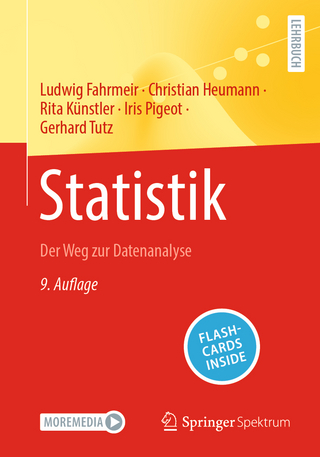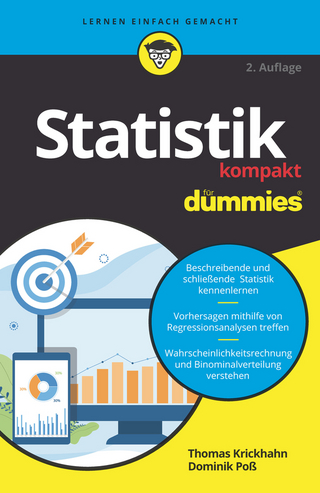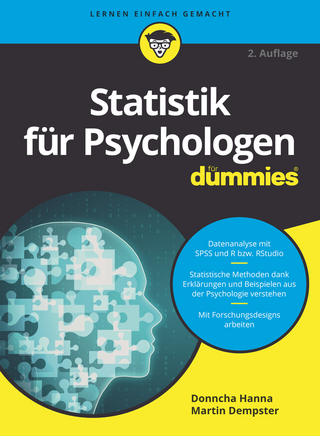
Introduction to Statistics and Econometrics
Harvard University Press (Verlag)
978-0-674-46225-0 (ISBN)
This outstanding text by a foremost econometrician combines instruction in probability and statistics with econometrics in a rigorous but relatively nontechnical manner. Unlike many statistics texts, it discusses regression analysis in depth. And unlike many econometrics texts, it offers a thorough treatment of statistics. Although its only mathematical requirement is multivariate calculus, it challenges the student to think deeply about basic concepts.
The coverage of probability and statistics includes best prediction and best linear prediction, the joint distribution of a continuous and discrete random variable, large sample theory, and the properties of the maximum likelihood estimator. Exercises at the end of each chapter reinforce the many illustrative examples and diagrams. Believing that students should acquire the habit of questioning conventional statistical techniques, Takeshi Amemiya discusses the problem of choosing estimators and compares various criteria for ranking them. He also evaluates classical hypothesis testing critically, giving the realistic case of testing a composite null against a composite alternative. He frequently adopts a Bayesian approach because it provides a useful pedagogical framework for discussing many fundamental issues in statistical inference.
Turning to regression, Amemiya presents the classical bivariate model in the conventional summation notation. He follows with a brief introduction to matrix analysis and multiple regression in matrix notation. Finally, he describes various generalizations of the classical regression model and certain other statistical models extensively used in econometrics and other applications in social science.
Preface 1. Introduction 1.1 What Is Probability? 1.2 What Is Statistics? 2. Probability 2.1 Introduction 2.2 Axioms of Probability 2.3 Counting Techniques 2.4 Conditional Probability and Independence 2.5 Probability Calculations Exercises 3. Random Variables And Probability Distributions 3.1 Definitions of a Random Variable 3.2 Discrete Random Variables 3.3 Univariate Continuous Random Variables 3.4 Bivariate Continuous Random Variables 3.5 Distribution Function 3.6 Change of Variables 3.7 Joint Distribution of Discrete and Continuous Random Variables Exercises 4. Moments 4.1 Expected Value 4.2 Higher Moments 4.3 Covariance and Correlation 4.4 Conditional Mean and Variance Exercises 5. Binomial And Normal Random Variables 5.1 Binomial Random Variables 5.2 Normal Random Variables 5.3 Bivariate Normal Random Variables 5.4 Multivariate Normal Random Variables Exercises 6. Large Sample Theory 6.1 Modes of Convergence 6.2 Laws of Large Numbers and Central Limit Theorems 6.3 Normal Approximation of Binomial 6.4 Examples Exercises 7. Point Estimation 7.1 What Is an Estimator? 7.2 Properties of Estimators 7.3 Maximum Likelihood Estimator: Definition and Computation 7.4 Maximum Likelihood Estimator: Properties Exercises 8. Interval Estimation 8.1 Introduction 8.2 Confidence Intervals 8.3 Bayesian Method Exercises 9. Tests Of Hypotheses 9.1 Introduction 9.2 Type I and Type II Errors 9.3 Neyman-Pearson Lemma 9.4 Simple against Composite 9.5 Composite against Composite 9.6 Examples of Hypothesis Tests 9.7 Testing about a Vector Parameter Exercises 10. Bivariate Regression Model 10.1 Introduction 10.2 Least Squares Estimators 10.3 Tests of Hypotheses Exercises 11. Elements Of Matrix Analysis 11.1 Definition of Basic Terms 11.2 Matrix Operations 11.3 Determinants and Inverses 11.4 Simultaneous Linear Equations 11.5 Properties of the Symmetric Matrix Exercises 12. Multiple Regression Model 12.1 Introduction 12.2 Least Squares Estimators 12.3 Constrained Least Squares Estimators 12.4 Tests of Hypotheses 12.5 Selection of Regressors Exercises 13. Econometric Models 13.1
| Erscheint lt. Verlag | 7.1.2021 |
|---|---|
| Zusatzinfo | 44 line illustrations, 13 tables |
| Verlagsort | Cambridge, Mass |
| Sprache | englisch |
| Maße | 156 x 235 mm |
| Gewicht | 635 g |
| Themenwelt | Mathematik / Informatik ► Mathematik ► Statistik |
| Wirtschaft ► Allgemeines / Lexika | |
| Wirtschaft ► Volkswirtschaftslehre ► Ökonometrie | |
| ISBN-10 | 0-674-46225-4 / 0674462254 |
| ISBN-13 | 978-0-674-46225-0 / 9780674462250 |
| Zustand | Neuware |
| Haben Sie eine Frage zum Produkt? |
aus dem Bereich


